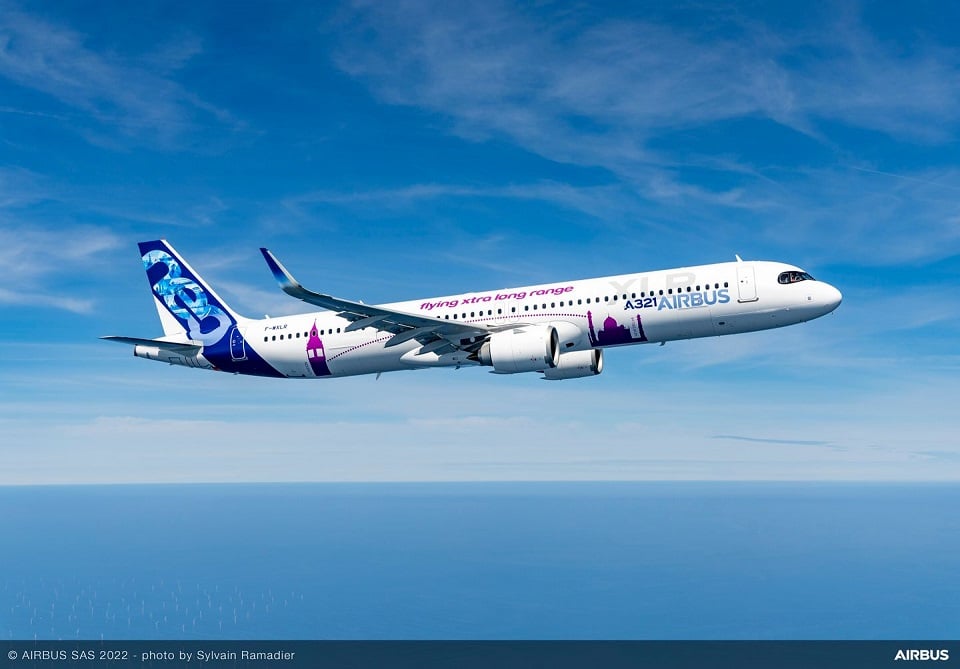Airlines
Airbus A321XLR jet faces range gap after design safeguards

Airbus has apparently been struggling with a gap in the predicted range of the aircraft in a recent development involving the much-awaited A321XLR. In order to obtain certification for the new long-range, single-aisle aircraft, agreements about the necessary design safeguards were established with European regulators. This adjustment is the result of those agreements.
DGCA to deregister two more SpiceJet aircraft on lessor’s request(Opens in a new browser tab)
Despite being creative, this design generated questions from regulators due to worries about potential fire dangers and potential difficulties during an emergency evacuation. Unintended weight consequences resulted from the necessary modifications, which also included strengthening the structural elements and adding a specific protective liner to the fuel tank.
In response to a proposal for a major modification in the type design of a big aircraft, the A321XLR, the European Union Aviation Safety Agency (EASA) issued an important consultation document in December 2022. This aircraft included a one-of-a-kind design element, an RCT (Rear Centre Tank) located beneath the cabin floor, which necessitated additional safety concerns not typically encountered in regular aircraft design practices.
Qantas has selects the Airbus A350-1000 for ‘Project Sunrise’(Opens in a new browser tab)
To meet these specific issues while maintaining the highest safety standards, EASA proposed the establishment of special circumstances (SCs). These would impose severe safety procedures to offset the risks associated with the unusual RCT design. By enforcing these, EASA hoped to ensure that the A321XLR’s occupants are adequately protected in the event of an external fire, fuel vapor ignition, or fuel tank explosion. Moreover, the crashworthiness requirements seek to prevent fuel spillage that could potentially lead to hazardous fires in survivable crash scenarios.
According to the report, Initial weight enhancements were anticipated to add 200–300 kilos, but recent industry insights point to a heavier 700–800 kilos. The jet’s maximum range was originally estimated to be 4,700 nautical miles (8,700 km), however it is anticipated that this significant weight increase will reduce it. Industry insiders realistically advise a reduction of about 200 nm (370 km), highlighting its operating range, which is closer to 4,000 nm.
The range of the A321XLR is particularly significant for airlines like New York-based JetBlue, which is anticipated to be among the first to fly the new model. JetBlue intends to create routes in Latin America and increase its presence in Europe with the A321XLR.
Despite these obstacles, Airbus is committed to completing the A321XLR’s certification by the end of the year, with the first aircraft deliveries anticipated in the second quarter of 2024.

Airlines
Air India Rolls Out A350s for Delhi-New York JFK and Newark Routes

In a major development for North American travelers, Air India has announced the deployment of its state-of-the-art Airbus A350-900 aircraft on two key routes: Delhi to New York and Delhi to Newark.
The service on the Delhi-New York route will commence on November 1, 2024, while the Delhi-Newark route will see its inaugural flight on January 2, 2025.
The introduction of the air india a350 will bring significant enhancements to Air India’s offerings, particularly with the launch of its Premium Economy class. air india retrofit This new class will feature 24 wide seats arranged in a 2-4-2 configuration, providing passengers with extra legroom and a more comfortable flying experience.
Soon, Air India aircraft will feature onboard WiFi & all-new cabins: Click here
“We are encouraged by the positive guest feedback we have received from the domestic deployment of our air india a350 interior to offer our hero product on the Delhi-New York JFK and Delhi-Newark routes. This is a significant leap forward for our U.S. operations that also underscores our commitment to continuous improvement,” said Campbell Wilson, Chief Executive Officer & Managing Director of Air India.
The A350’s Business class will set new standards with 28 private suites, each equipped with full-flat beds, direct aisle access, and personal wardrobes. Economy class will be configured to accommodate 264 passengers in a 3-4-3 layout. Across all cabins, passengers will enjoy the latest Panasonic eX3 in-flight entertainment system, offering over 2,200 hours of content.
Air India’s First A350-900: Interior, Routes, &Inflight Features: Click here
This strategic deployment marks a notable enhancement in Air India’s U.S. operations, with 60% of its flights to the U.S. now featuring new or upgraded cabin interiors. The air india new international routes currently operates 51 weekly flights to five U.S. destinations: New York JFK, Newark, Washington DC, Chicago, and San Francisco.
The revamped cabins, advanced in-flight entertainment systems, and improved service standards represent air india wifi commitment to providing a superior travel experience. “We believe this enhanced offering will solidify Air India’s position as a leading carrier and attract travellers seeking a world-class flying experience between India and the United States,” the airline stated.
Seats on these flights are now available for booking on Air India’s website, mobile app, and through travel agents, ensuring that passengers can easily plan their journeys on these newly upgraded routes.
Air India Economy vs Qatar airways economy: which is best?:Click here
-

 Travel1 week ago
Travel1 week agoAir India to Expand US Operations with Three New Routes After a Decade
-

 Travel2 weeks ago
Travel2 weeks agoWhy We Should Avoid These Stamps in a Passport
-

 Airlines1 month ago
Airlines1 month agoInvestigations Reveal Fake Chinese Titanium in Boeing and Airbus Jets
-

 Tech4 weeks ago
Tech4 weeks agoChina’s CATL Plans 1,800-Mile Electric Plane Launch by 2027
-

 Airport3 days ago
Airport3 days agoTop 10 Largest Airports in the World by Size
-

 Aerospace4 weeks ago
Aerospace4 weeks agoChina’s Fighter Jets Turn Wings into Autonomous Drones
-

 Airlines4 days ago
Airlines4 days agoAir India Rolls Out A350s for Delhi-New York JFK and Newark Routes
-

 Defence3 weeks ago
Defence3 weeks agoBoeing Enhances Chinook with New Engines and Block II Upgrades at $96 Million







